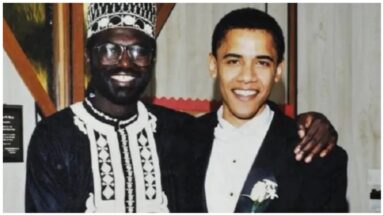History — painful, at times angry, history — unfolded outside the White House in the past week and curators from the Smithsonian Institution toured the area on Wednesday to begin collecting the art, signs, photographs and other artifacts that multiplied there during the recent protests over George Floyd’s death.
The nine curators from three Smithsonian museums spoke to protesters close to the security fence erected near Lafayette Square and later took away some of the signs that were being displayed.
“It is critical that we collect so this moment does not get lost,” said Aaron Bryant, a curator at the National Museum of African American History and Culture. “We talk to people so we don’t forget their stories. History is happening right before us.”
Louisville Bans No-Knock Warrants With ‘Breonna’s Law,’ But Her Killers Still Haven’t Been Arrested
Gone are the days when museums only sifted through the remnants of what survived from events that occurred generations ago. This effort was part of the new initiative, practiced by many museums, to collect historical artifacts in real time.
After the protests began, the fence erected to block protesters in front of the White House became a tableau calling out racism and honoring victims.
“I can’t breathe.” “Silence is not the answer.” “Defund the Police,” “Justice 4 George.”
Mr. Bryant said he and other curators inspected signs and banners now on a construction wall near the fence, and protest signs beyond the immediate fence area as well, including boarded-up office windows that had been painted on. “I was captivated by the artwork that was on the boards,” he said.
The curators noted the names of artists and photographers, and identified objects that might be important to preserve. “If we don’t collect this stuff, who knows what happens to it,” Mr. Bryant said.
The African American museum is working in coalition with the National Museum of American History and the Anacostia Community Museum which also had curators surveying the Lafayette Square area on Wednesday. The National Museum of American History said in a statement that it “recognizes that we are in a transformative time in the United States. We are listening to communities. We will document this important moment responsibly and respectfully through a variety of objects and stories from Washington, D.C. and across the nation.”
Source: Museums Collect Protest Signs to Preserve History in Real Time



Recent Comments